For the U.S. to fully realize the economic and cultural benefits of broadband, it must reach everyone and be built to last
This story was republished on Jan. 5, 2022 to make it free for all readers
At Microsoft Corp., the baseline for major investments and new products is what businesses and consumers will need a decade from now. By then, artificial intelligence, human language technologies, and devices barely imagined will play a large role in everyday lives.
The United States, said Microsoft President Brad Smith, should adopt a similar model of foresight for nationwide internet access.
"It would be a huge leap," he said in an interview with the Milwaukee Journal Sentinel, "because there are still many parts of the country with infrastructure that was created for the mid-1990s."
Smith, who grew up in Appleton, has been on the cusp of new technologies throughout his career. In 1986, he accepted a job at the prestigious Covington & Burling law firm, on the condition it provide a personal computer at his desk — something the Washington, D.C., firm had never provided.
When he joined Microsoft in 1993, the company's Windows 95 operating system was in development under the code name "Chicago." It was one of the first systems meant for the general public, not just technology professionals, and it changed the way ordinary people interact with computers.
Now, the nation is trying — once again — to bring broadband, or high-speed internet, to millions across rural America.
With its capacity for economic development and cultural connectedness, broadband has become nearly essential to sustaining rural American life. And the COVID-19 pandemic, which sent workers and students alike to home offices and virtual classrooms, highlighted just how far behind those without access have fallen.
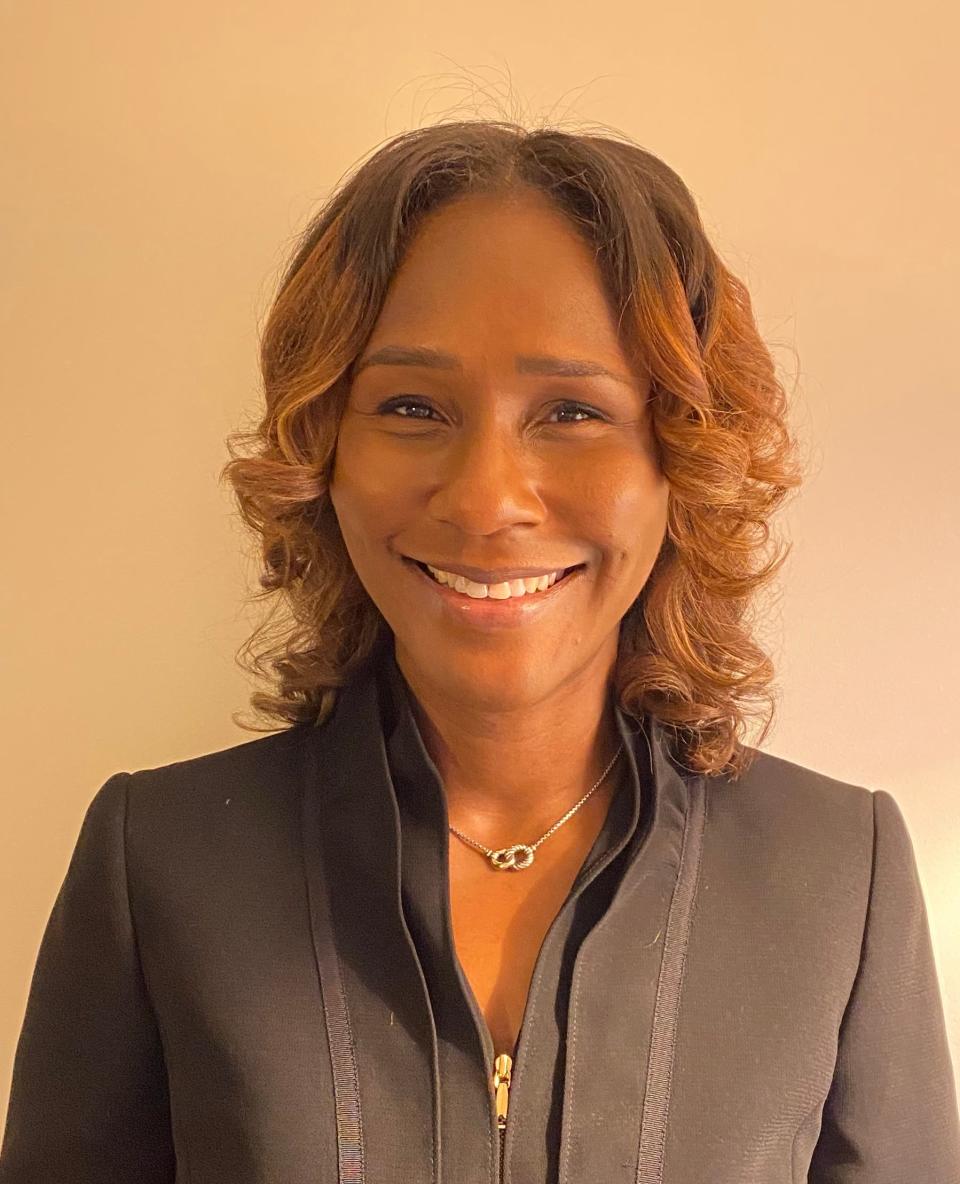
“If we squander this opportunity, we might never get another chance to close the broadband gap once and for all. The stakes are that high,” said Vickie Robinson, general manager of a Microsoft initiative focused on internet access.
“We need systemic change to solve a systemic problem," Robinson said.
Tuesday, the Senate passed a $1 trillion bipartisan infrastructure plan that includes $65 billion President Joe Biden sought for broadband expansion.
The bill provides about $42 billion in grants to states, which in turn would funnel it to internet service providers to expand networks. The projects would be required to deliver minimum broadband speeds of 100 megabit per second downloads and 20 Mbps uploads, adequate bandwidth for many households now, but not a future-proof solution.
The Senate bill also calls for $14 billion toward a $30 monthly benefit that would help low-income people pay for internet service, extending a pandemic-era program.
The Senate approved the $1 trillion infrastructure bill in a 69-30 vote, with support from both Democrats and Republicans. The House is expected to consider it in September.
Some have suggested the Biden plan could repeat past mistakes and pour out taxpayer money with little public accountability. Others have said the president was going too far in meddling with the private sector.
Smith said the overall goal, at least, is commendable.
"Does that mean it has to have the price tag it has, or that it has to be designed in a particular way? No. It all needs a lot more conversation and thought," he said. "The key is to do something that builds upon what we've learned and doesn't just add another layer to a multilayered cake."
Networks should be built to last
The best broadband, it's generally agreed, is an affordable connection that supports the needs of consumers and businesses for many years into the future.
It's not unreasonable to achieve because fiber-optic cable, the industry's gold standard, has near limitless capabilities. Once buried in the ground, it can be upgraded through electronics rather than digging up the cable.
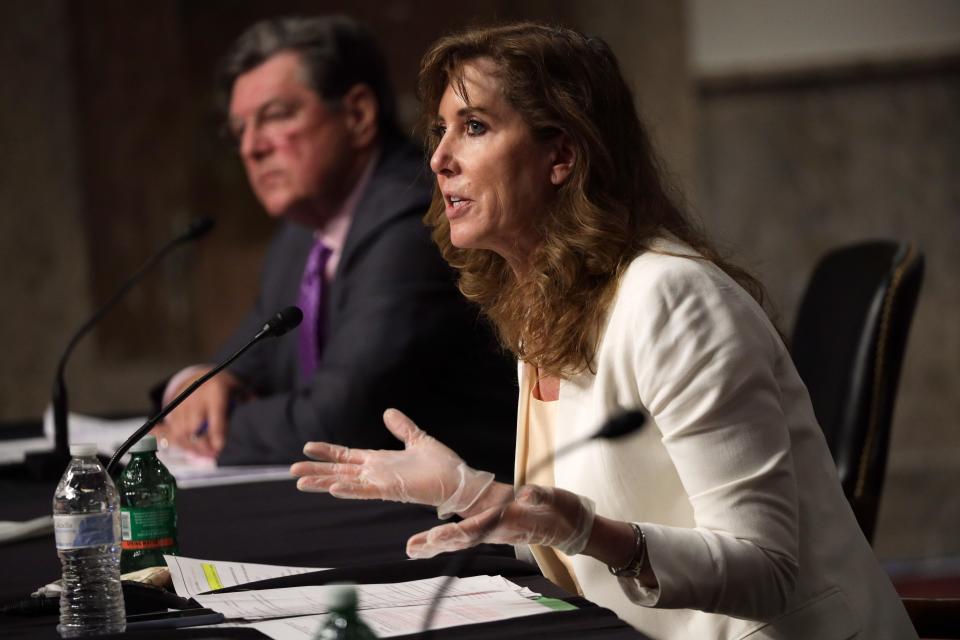
Conversely, it's a waste of time and money to rebuild networks over and over because they were based on the needs of the past, not the future, said Shirley Bloomfield, chief executive officer of NTCA - The Rural Broadband Association, which represents about 850 community-based telecommunications companies.
“We are way past the days when the internet meant just watching your favorite Netflix show,” said Bloomfield, who is originally from Fond du Lac. Now, broadband must be able to simultaneously support a family's need for connecting to the office, participating in virtual classrooms, live chats with a doctor or friend group.
The internet has become the linchpin for rural businesses as well. Farmers need it to buy equipment and follow crop prices. Factories need it to connect with suppliers and customers. Rural health centers, tourism businesses, shops on Main Street, all need a robust, reliable connection.
“For these reasons, we need to aim higher and do better,” Bloomfield said. “We cannot afford to resign rural or lower-income Americans to second-class service. Not everyone will get the best broadband right away, but we should not adopt policies and programs that aim for ‘just good enough’ internet speeds."
Christopher Ali, associate professor of media studies at the University of Virginia, says that second-class service creates, essentially, second-class citizens.
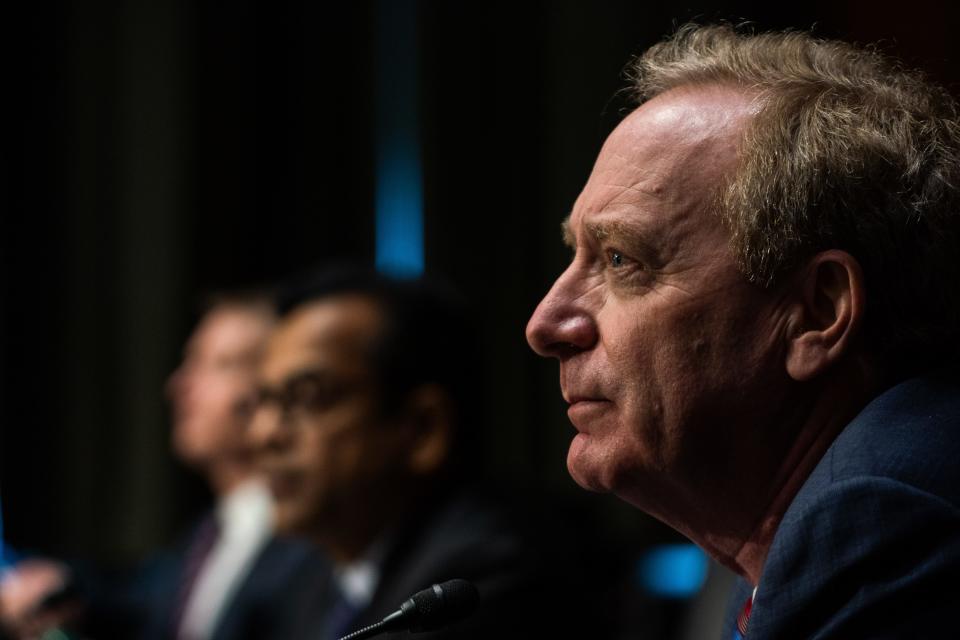
"The idea that we just need to get something to rural America rather than nothing at all, shortchanges everyone who's living there," he said. "I have met people who were paying $300 a month for an internet connection that was no better than what I had in 2005."
Public spending will be part of the solution, according to Microsoft's Smith.
"Electricity, automobiles and rockets defined much of the 20th century," he said. "In each case, individual inventors and market economics provided the foundation for progress. But public spending was needed to fill in market gaps and was critical for public goods like roads and bridges."
Subsidies for consumers could be in order, too.
"Just as we've had a federal program to subsidize electricity for low-income households, we are going to need a program to subsidize broadband access," Smith said. "That's going to be part of the equation."
Success stories, here and abroad
The examples of other countries, and of some American cities that have built their own broadband systems, provide some perspective.
South Korea has some of the world’s fastest internet service. Gigabit speeds are common, and average download speeds top 210 Mbps.
A gigabit is roughly 1,000 megabits per second of data. Having that kind of speed means more things can be done at the same time; parents can watch a 4K ultra-high-definition movie in the living room while their kids play a virtual reality game in a bedroom. For home offices, working with cloud-based storage can be just as seamless as using a USB stick or external hard drive.
For most purposes, slower speeds are fine for now. But gigabit connections are future proof, akin to adding lanes to an interstate highway to handle more traffic in the years ahead.
How did South Korea do it? In the 1990s, its government set a goal of becoming a highly connected country. People were urged to make the internet a priority in their everyday lives, and subsidies were offered to low-income families and first-time users.
Population density played a huge role. With 1,300 people per square mile, compared with 93 per square mile in the U.S., it was more economical to provide broadband with costs spread over millions of customers.
Some of Europe’s smallest countries also have done well. Estonia, with 1.3 million people, has a free Wi-Fi network reaching nearly everyone, and is widely acclaimed for nurturing business startups. In 2003, it was the birthplace of Skype.
How did it happen? After the collapse of the Soviet Union in 1991, Estonia pursued telecom businesses and a future less dependent on agriculture and Soviet-era industries. The country’s new leaders were young, technology-savvy entrepreneurs. Also, in land mass, Estonia is only about one quarter the size of Wisconsin — making it much easier to reach everyone with a Wi-Fi network.
Country-by-country rankings of internet speeds vary widely based on how they're calculated. But in June, the Seattle-based firm Ookla placed the U.S. 12th in the world, between Liechtenstein and Spain, with 195 Mbps downloads.
Another recent report, from the Open Technology Institute, shows the cost of internet service is higher in the U.S. than in Asia and Europe and that some countries have nearly 100% coverage.
Why aren't we ranked higher?
"The answer is complicated, but you could write a book on the many policy failures that have led to this point," said Joshua Stager, deputy director, broadband competition policy, with the Open Technology Institute.
"One of the big failures has been the lack of competition," Stager said.
A few U.S. cities have created their own networks and made them available for service providers to use at no charge, provided they agreed to share the lines and compete for customers.
In some places, that approach has lowered prices. And the broadband providers have been able to concentrate more on bringing in new business without the burden of infrastructure costs.
Ammon, Idaho, a suburb of Idaho Falls, adopted that model.
With a population of around 18,000, it is Idaho’s fifth-largest city and one of the state’s fastest-growing places. But in 2009, city officials objected to the local cable company seeking $80,000 to connect two municipal buildings with fiber meant to improve utility services.
They decided to do it themselves, for $23,000, and went on to create a fiber network that now offers broadband covering more than half the city.
Ammon residents can get gigabit speeds for $10 a month, with a total price of about $50 when the city's fees to maintain the system and cover construction costs are included.
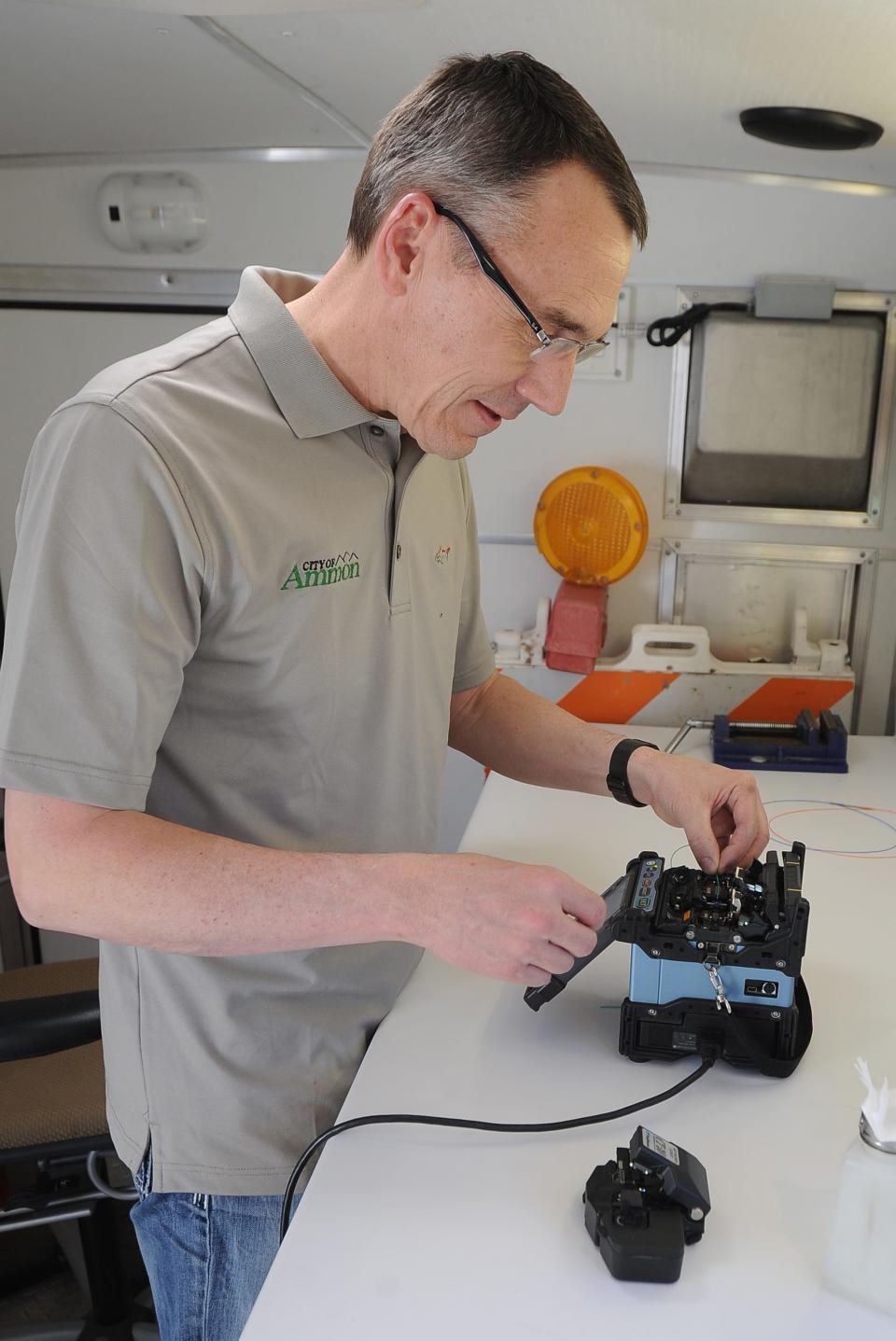
They can choose from four internet service providers, while businesses have at least six to pick from. Subscribers can also change providers and plans at any time over the city's website.
"It literally takes less than a minute to sign up," said Bruce Patterson, Ammon's former technology director, who started the system, and now has a consulting firm that promotes open-access networks.
That level of broadband competition is foreign to most American consumers, said Stager, with the Open Technology Institute. In most places, consumers only have one or two companies to choose from.
“It also shows that the emperor has no clothes; that broadband can be offered at lower prices,” he said.
Quinn Whipple, the owner of QWK internet service in Ammon, said he's realized significant cost savings by not having to maintain his own fiber system. The downside is, by using a shared network, he faces more competition.
“Do I like it as a businessman? It’s not my first choice because I don’t make as much money,” he said. "But it's less headache."
In Wisconsin, the City of Superior is pursuing a network based on Ammon's example. If it comes to fruition, residents could choose from multiple service providers and subscription plans.
"Competition will drive down costs," said Mayor Jim Paine, adding that no one would be forced to sign up, and taxes would not be raised to fund the network.
The $31 million project still needs final approval before construction could begin next year. The city expects to receive about $17 million in federal COVID relief money, a portion of which could be used to create the network.
Forty miles east of Raleigh, North Carolina, the City of Wilson shows what can happen when a municipality takes matters into its own hands.
In the early 2000s, Wilson city officials sought to create a fiber network that would serve municipal operations including fire stations. They tried to partner with a local cable television company, which offered internet service, but were rejected.
“I was told they laughed in our city manager’s face and didn’t take our request for a partnership at all seriously,” said Will Aycock, the city's current information technology manager.
In 2007, Wilson officials started construction of their own network, which has expanded into offering high-speed internet for families and businesses not only in the city of 50,000 people but in surrounding rural areas as well.
An incumbent cable provider sought state legislation aimed at stopping the project. In one hearing, Mayor Bruce Rose referred to the battle as “not just David versus Goliath, but David versus Goliath and all his cousins.”
The legislation was eventually signed into law. By then, however, the city's system had already been built and grandfathered in place. This year, it reached a record 11,000 customers.
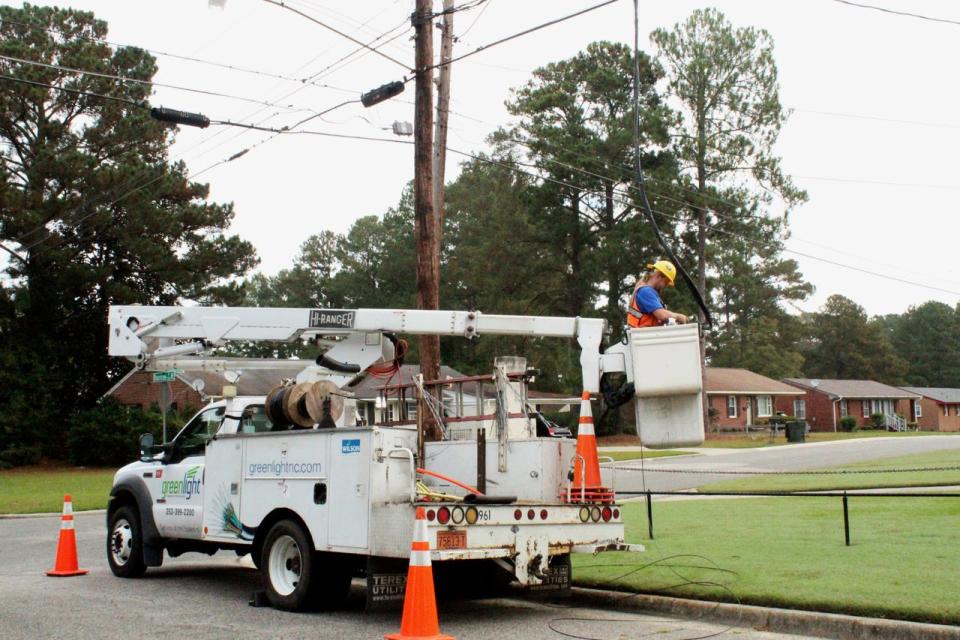
Wilson has won national accolades for providing broadband starting at around $40 a month for 50 Mbps service, both downloads and uploads — enough bandwidth for most families streaming videos and working from home.
Some rural Wisconsin residents pay much higher amounts for 1.5 Mbps downloads and less than 1 Mbps uploads, barely usable for anything.
In northeast Wisconsin, Bertram Communications recently advertised 10 Mbps download speeds, less than half the federal definition of broadband, for $74.95 a month plus an estimated $175 one-time installation charge without a 3-year contract. Bertram did not return Journal Sentinel calls asking about its rates.
Wilson city officials say their system has been self-supporting and has nearly paid off loans the city took out to get it started. They credit it for fostering new businesses, including technology startups, that are diversifying an economy long dependent on tobacco processing.
“It was clear to us that broadband was going to be essential in a community of our size," Aycock said.
Much smaller communities often feel the same way. Desperate for better internet access, Lyndon Township, Michigan., built its own fiber system funded by a property tax.
Service providers weren’t very interested in covering the rural community of 2,800 people, even though it's only 30 minutes from Ann Arbor, home to the University of Michigan.
“We finally realized that, in order to make this happen, we were going to have to do it ourselves,” said Gary Munce, who along with a neighbor, Ben Fineman, in 2016 organized a campaign to get broadband.
“Here we were, two guys in six square miles of rural Michigan, making a decision that we were going to raise millions of dollars and build a network," Munce said. "That wasn’t something you just decided over breakfast."
A survey of residents showed that broadband and clean water were the community's top priorities. A feasibility study recommended a fiber network rather than a cheaper wireless solution, and voters were asked to fund the project through a property tax increase estimated at $263 per home annually for 20 years.
The voter turnout was 43%, a record for a non-general election in the community, and the measure passed by a two-thirds margin.
Lyndon Township partnered with Midwest Energy and Communications, an electric and broadband cooperative, to build a network that offers 50 Mbps service for $35 a month and gigabit speeds for $69. Internet-based phone service is also available.
Around 85% of the township’s 1,200 households signed up for the service, well above the 38% needed to make the service financially viable.
Municipal systems sometimes fail
Some of the elements Biden is seeking in his infrastructure plan, such as promoting broadband systems run by local governments, nonprofits and cooperatives, didn't survive negotiations in the Senate bill.
The White House had said it wanted to encourage broadband providers "with less pressure to turn profits and with a commitment to serving entire communities."
But the for-profit industry has viewed such alternatives as a threat to billions of dollars in private investment and has fought them for decades.
In Wisconsin, industry officials point to examples of municipal-run broadband systems that have failed at taxpayers' expense.
Northwest of Green Bay, the City of Shawano struggled with a network it created and then sold, in 2013, at a loss of millions of dollars. The city offered internet, television and phone services but had years of operating deficit.
"The hardest part isn't the construction. It's running the business," said Bill Esbeck, executive director of the Wisconsin State Telecommunications Association, which represents the industry's privately held companies.
In 2005, the City of Antigo, in Langlade County, created a network it sold at a loss five years later.
“It was a very political thing to begin with,” said Jim Pike, the city’s information technology supervisor. “Why was the city getting into private enterprise?”
The reason: At the time, Antigo, population 8,000, had lousy internet service, Pike said, and the incumbent provider hadn't shown much interest in making improvements.
But the city-created network only received about one-third of the revenue that was originally expected and could not keep up with debt payments, according to state Public Service Commission documents.
In 2010, Antigo sold its network to Wittenberg Telephone Co., a local broadband provider that kept the service going and made upgrades.
The city lost about $1 million on the deal. “But we brought something to the community it didn't have," Pike said. "The quality of service is much better now, and I felt like we did the right thing."
Sometimes it's proven too expensive for a city to build a network.
In 2016, Madison city officials sought to partner with a private-sector provider on a fiber network the city would have built and maintained. But at $173 million, the cost proved too much. And a pilot program aimed at four low-income neighborhoods ended in 2018 after only 19 customers signed up for the $10 a month service.
Still, there have been success stories in Wisconsin.
Reedsburg, in Sauk County, created its own network in the late 1990s. It was one of the first municipalities in the country to build a fiber-to-the-home system for residents, and it's since expanded into surrounding communities.
“We connected ourselves,” said Reedsburg Utilities Manager Brett Schuppner, because the private sector wouldn't bring fiber to city facilities and schools.
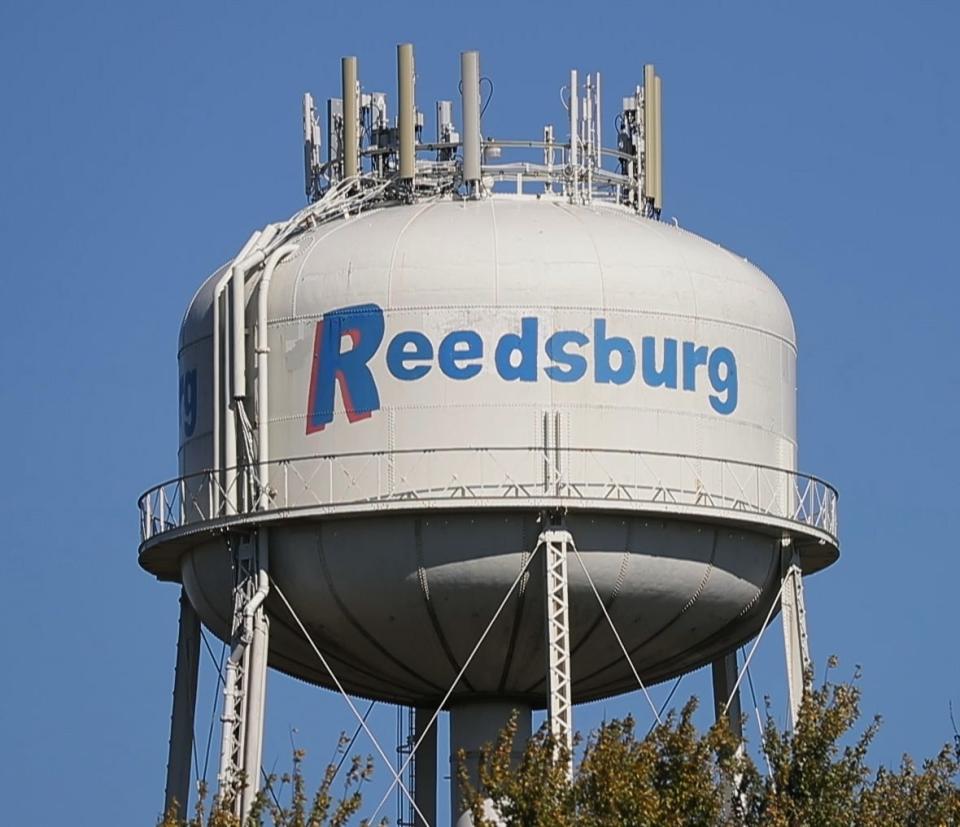
Richland Center, in Richland County, created a network it later sold to a telephone cooperative for a profit. The City of Waupaca, in Waupaca County, created a small network that's still in operation.
Gov. Tony Evers said there's probably a role for local government in offering broadband as a public service.
"But laws and other political issues get in the way," Evers said in a Journal Sentinel interview.
Wisconsin's statutes require that a municipality conduct a three-year feasibility study, hold public hearings and meet other criteria before creating a broadband system.
Critics say it gives the for-profit companies leverage to defeat proposed public-owned networks, through political pressure and scare tactics, even if the companies haven't offered adequate service themselves.
It could be difficult to convince the Legislature to overturn the state's broadband statutes passed in 2003 under pressure from the industry.
"It was the hand we were dealt," Evers said. "I disagree with the decision, but let's move forward and make sure we hold the private sector accountable and get the best broadband we can."
Still, the hurdles to starting a municipal system can be overcome, and they're in place to curb unwise spending, said Madison attorney Anita Gallucci, who has worked with cities and towns on their internet-access issues.
"It would be imprudent for a municipality to undertake a capital-intensive broadband project without first doing its homework by way of a feasibility study, and frankly the study should be much more rigorous than the one Wisconsin law requires," she said in an email to the Journal Sentinel.
An open-access network, like the one planned in Superior, would be allowed under Wisconsin's law, according to attorneys in the field.
Locally owned broadband does better
Small, for-profit broadband businesses have sometimes been the unsung heroes in rural areas where the bigger companies haven't made many improvements.
"They seem more connected to the community and are more willing to go the last mile," said Kim Kaukl, executive director of the Wisconsin Rural Schools Alliance.
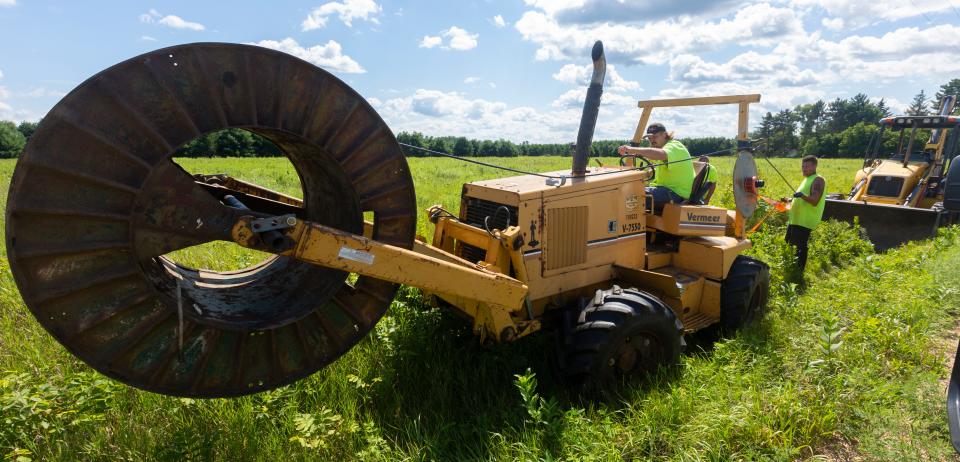
For example, Wittenberg Telephone Co., incorporated in 1921, recently partnered with the Stockbridge-Munsee Band of Mohican Indians on a project in Shawano County.
The two organizations landed a $457,508 Public Service Commission grant to bring service to about 200 homes and 25 businesses including the North Star Casino, one of the area's largest employers and the main revenue source for the tribe.
Stockbridge-Munsee supplemented the grant with its own money to cover hundreds of additional homes that will be connected yet this year.
“The lack of reliable internet access has been a huge barrier for us,” said Stockbridge-Munsee President Shannon Holsey. “When you make this kind of investment in your community, there are resounding returns.”
There's been success at a regional level as well.
WIN Technology, based in Eau Claire, is owned by a group of 31 mostly small telephone companies that provide broadband service. Its fiber network is used by Wisconsin State Telecommunications Association members and has been developed over the last 20 years in parts of Wisconsin, Michigan, Illinois and Iowa
"Now we find ourselves in a situation that reminds me of the early days of getting electricity to farms and rural America," said CEO Scott Hoffmann. "That took a long time, and we are trying to do all this broadband in a short period."
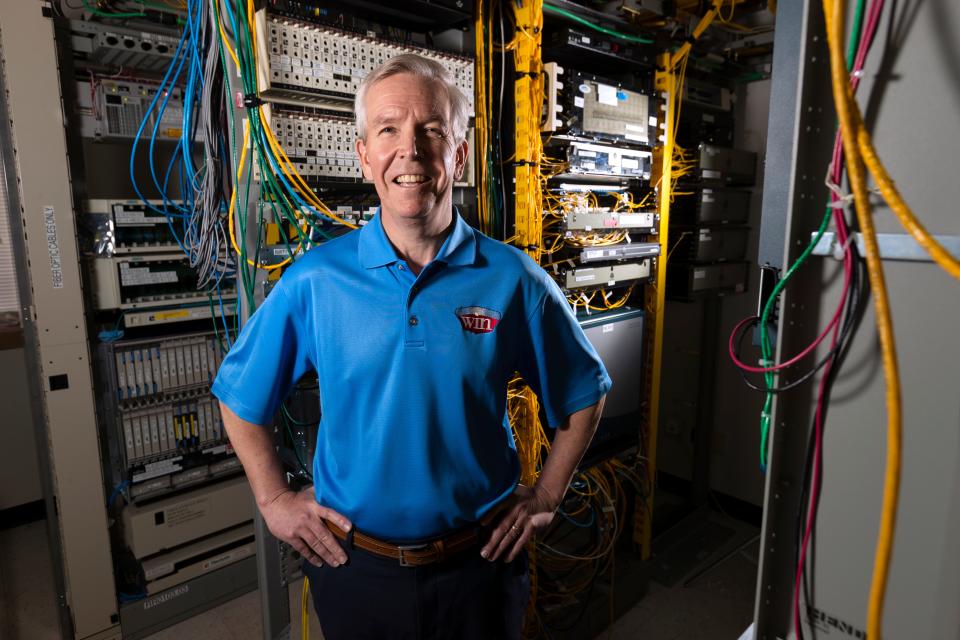
Extending internet service has been a good fit for some electric cooperatives because they have essential infrastructure such as cable and poles, service crews and customer support.
"I think they should be encouraged," said Jonathan Sallet, a senior fellow at the Benton Institute for Broadband & Society, and a former general counsel for the Federal Communications Commission.
"The rural electric cooperatives and rural telephone companies have been more willing to put in modern networks than some of the larger companies," he said.
In Clark County, in central Wisconsin, economic development director Sheila Nyberg has proposed a partnership with an electric cooperative to get broadband to the entire county. Revenue from the system would be used to pay off a startup loan, similar to the way electricity was brought to the countryside nearly a century ago.
Clark County is one of the least connected counties in the state, and it showed when schools closed for COVID-19 and students didn’t have home internet access.
For more than a decade, Nyberg said, federal money has gone to large internet service providers that have done little to improve coverage in areas where it's needed the most.
"I'm tired of pretending that the big dog is the best dog in the room," she said.
Nyberg said some type of local control, such as an electric cooperative, would be a better alternative.
“I’m done playing the game," she said. "It's time for blunt, factual reality. No more promises not kept."
More in this series
The Journal Sentinel is examining the lack of high-speed internet, also called broadband, in rural areas.
Read more of our reporting:

Rick Barrett is a business reporter who covers agriculture, large manufacturers such as Harley-Davidson, the telecom and defense industries, and other topics. Barrett's coverage of Wisconsin's struggling dairy industry received a 2019 National Headliner Award — his second. His work also has earned a Gerald Loeb Award for outstanding business reporting, a Barlett & Steele Award for investigative reporting, and has been recognized by the Society of Professional Journalists, the Society of Environmental Journalists, and the Association of Health Care Journalists. Barrett lives on a hobby farm near Appleton where he takes care of donkeys. He joined the Journal Sentinel in 2000.
Email him at rick.barrett@jrn.com and follow him on Twitter: @rbarrettJS.

Mark Hoffman has been a visual journalist for the Milwaukee Journal Sentinel since 1992. He has traveled around the world covering the Olympics and other major sporting events, the plight of refugees in Jordan and Europe, the threat of zoonotic diseases, the civil war in El Salvador, the ongoing struggle of poverty and corruption in Haiti, the environmental effects of oil sands mining in Alberta, and the aftermath of the 9/11 attacks in New York City. Before coming to Milwaukee, he was a photo editor at the New York headquarters of The Associated Press, a photojournalist at the Bridgeport Post & Telegram (now the Connecticut Post) and a photographer at the La Crosse Tribune.
Email him at mark.hoffman@jrn.com; follow him on Twitter: @MJSPhotog.
About this project

Reporter Rick Barrett spent the 2020-21 academic year as an O'Brien Fellow in Public Service Journalism at Marquette University examining the challenges facing rural Wisconsin. He was assisted by student researchers Christopher Miller and Kelli Arseneau.
All work on the project was done under the guidance of Milwaukee Journal Sentinel editors. Marquette University and administrators of the program played no role in the reporting, editing or presentation of this project.
To support the Journal Sentinel's in-depth local reporting, please subscribe at jsonline.com/deal.
This article originally appeared on Milwaukee Journal Sentinel: U.S. needs future-proof approach in getting broadband internet to all

